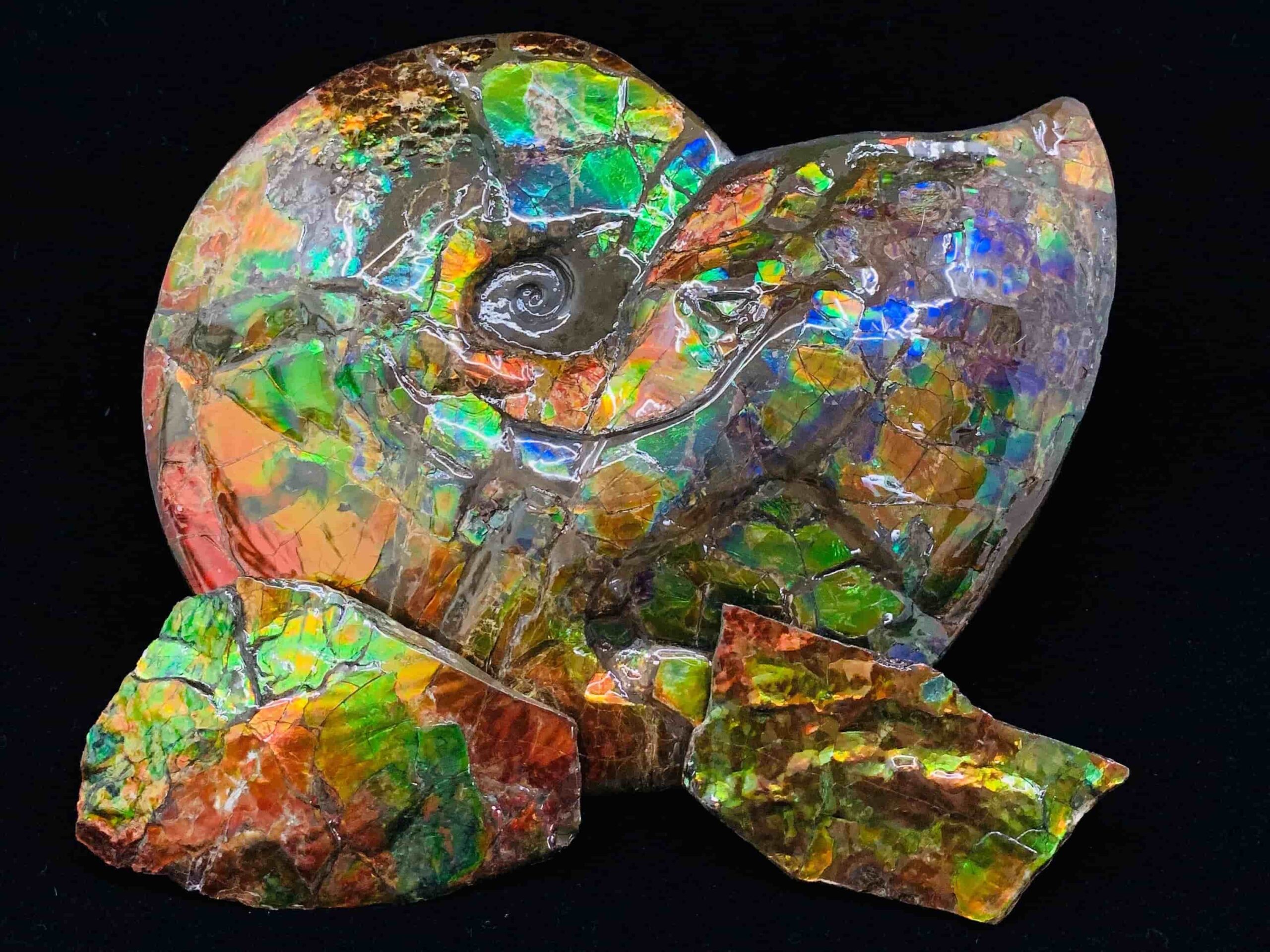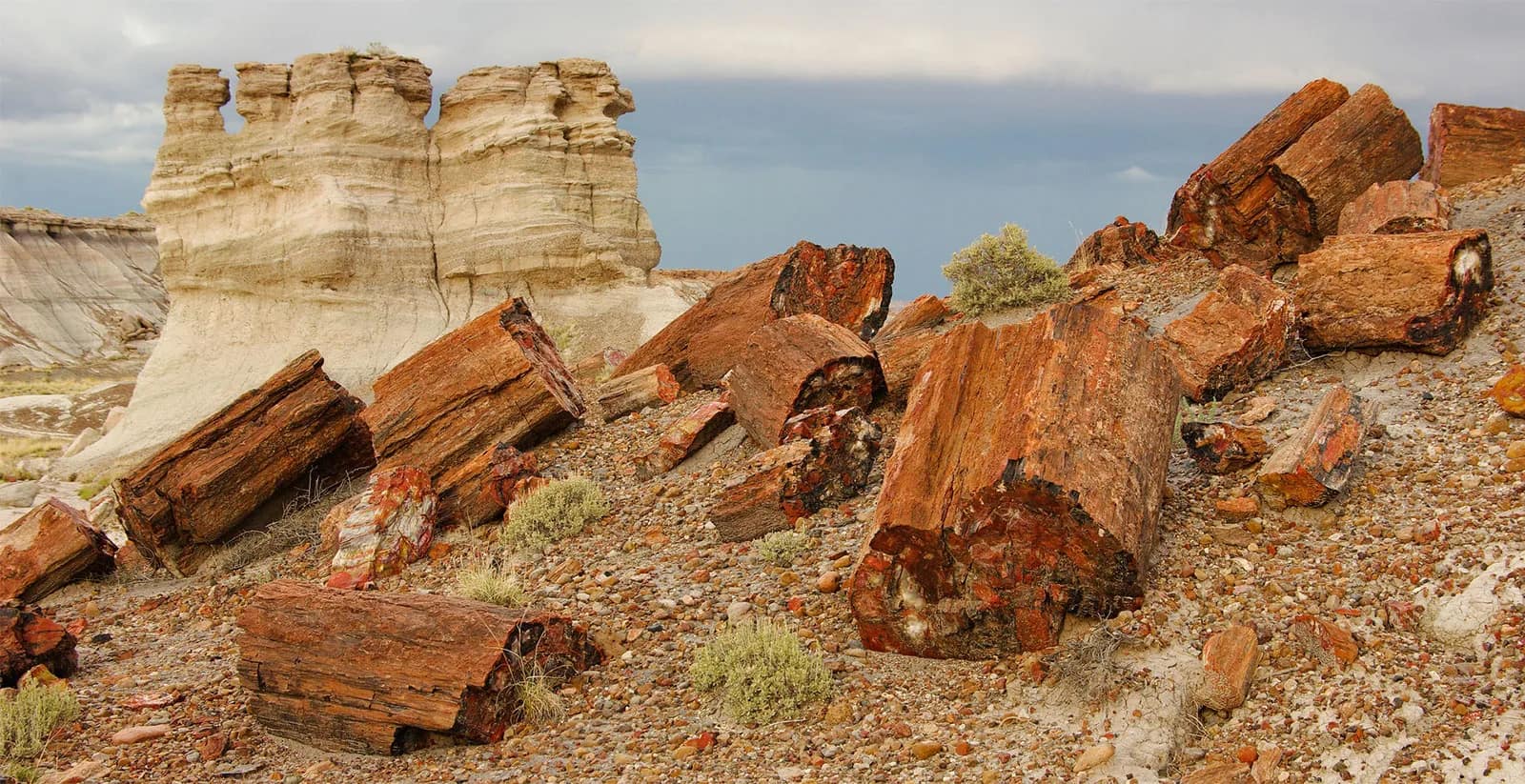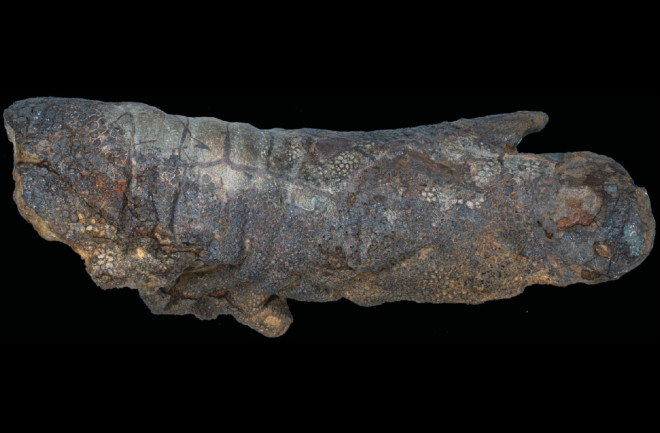
By Lindsay Kastroll, Master’s student in Biological Sciences, University of Alberta
Demystifying the way the science actually works…
Welcome back to Palaeo How-To, the blog series that breaks down the behind-the-scenes processes of palaeontology. In our first edition of Palaeo How-To, we explored what it means to study palaeontology, the study of prehistoric life. For something to be considered prehistoric, it ideally should have had enough time to fossilize – but what is a fossil? The definition is likely broader than you think.
When most people think of fossils, they think of dinosaur bones. While dinosaur bones are excellent and exciting examples of fossils, the term encompasses so much more! Simply put, a fossil is any fossilized evidence of a prehistoric organism. This can include structures made by microorganisms, fossilized feces called coprolites, entire trees turned to petrified wood, footprints left by sea scorpions, and of course, the bones and teeth of vertebrates.
 These logs of petrified wood, found in Petrified Forest National Park, Arizona, US, are so-called because they are prehistoric tree trunks that have been turned to stone. Fossilization doesn’t work quite as fast as Medusa, however. Photo from the United States National Park Service.
These logs of petrified wood, found in Petrified Forest National Park, Arizona, US, are so-called because they are prehistoric tree trunks that have been turned to stone. Fossilization doesn’t work quite as fast as Medusa, however. Photo from the United States National Park Service.
As I’m sure you can imagine, there are a lot of different types of fossils. The most important distinction to make is between body fossils and trace fossils. A body fossil is, as the name implies, an actual piece of an organism that has fossilized. Body fossils such as Albertosaurus skulls or Ginkgo leaves are indisputably important to our understanding of how prehistoric organisms looked. Trace fossils are better suited for showing how they lived. A trace fossil is any preserved evidence that an organism was once there excluding the organism itself. Trace fossils come in a wide variety of forms that demonstrate prehistoric behaviour, like footprints and burrows. These fascinating fossils will be the subject of their own edition of Palaeo How-To, so if you’d like to learn more about them, keep your eyes peeled!
Also important is the distinction between macrofossils and microfossils. Macro and micro are Greek prefixes meaning large and small, respectively. I’d wager that almost every fossil you can think of is a macrofossil – they’re large and easily observable with the naked eye. Microfossils, by contrast, are so small that palaeontologists must use microscopes to study them. Microfossils can include things like tiny teeth, shells, pollen, and other minuscule body parts. Surveying the microfossils within a sample of sediment gives palaeontologists an idea of how common certain groups of organisms were in a particular environment, like the relative abundances of different types of plants in a count of fossilized pollen.
So fossils preserve evidence of prehistoric life, both big and small – but what do we mean by “preserve”? How do fossils form? Well, just like there are several types of fossil, there are also several ways to become a fossil. The one you are no doubt most familiar with, even if you don’t know it by name, is permineralization. In permineralization, an organic object (a dinosaur bone or tree trunk, for example) is buried before it has time to decompose. While underground, groundwater infiltrates the organic tissues of the object and fills any empty spaces with mineral deposits, even up to the cellular level. What’s left is a very heavy three-dimensional replica of the original object, made of stone.

Ammolite is mined in Alberta by the company Korite, based in Calgary.
Other forms of fossilization are common in the fossil record, but aren’t as familiar to the general public. Similar to permineralization is replacement, in which the tissue itself is replaced by a mineral – this is common in shelled organisms. Also common in shells is recrystallization, in which the original chemical makeup of the shells changes into a different mineral form, instead of being replaced by something new. The Alberta provincial gemstone ammolite is actually fossilized ammonite shells that have recrystallized!
Three-dimensional structure can also be preserved without the original object itself. A mould forms when something, like a foot, presses into soft sediment, which later hardens into stone. A cast can form if more sediment fills in that hardened mould, and then solidifies itself in the shape of the original object. Not all fossils preserve three-dimensional shape, however; many prehistoric organisms were compressed by the weight of overlying sediment into a carbonaceous film in a process called adpression.
You may have noticed that a lot of the specimens I’ve been talking about here – dinosaur bones, shells, teeth, and wood – are hard body parts. A strong preservational bias results in the hard parts of organisms becoming fossilized far more often than their soft parts. This presents a lot of trouble for palaeontologists trying to reconstruct animals like dinosaurs, who could have had all sorts of strange fleshy wattles or combs like modern birds that simply decayed before they could fossilize. The challenge is even greater for palaeontologists interested in organisms made exclusively of soft tissue. The fossil record is remarkably poor for things like worms, fungi, jellyfish… and we’ll likely never catch more than a glimpse of the prehistoric diversity in these groups because of it.
In some rare instances, soft tissues can preserve, just like bones. It requires several environmental factors to be just right to avoid decomposition before the fossilization process can begin. Rapid burial and an anoxic (low oxygen) environment free of scavengers or bacteria increase the chances that soft tissues will preserve. When they do, the results can be spectacular. The Burgess Shale of British Columbia is replete with fossils of some of the earliest animal life, most of which are almost unrecognizable as animals as we’d imagine them today. These specimens are invaluable to our understanding of early vertebrate evolution. Dinosaur “mummies” with fossilized skin are exciting, too, of course, and help palaeontologists understand things about them that they could never have learned from their bones. For example, the hands of hadrosaur dinosaurs like Edmontosaurus were encased in a fleshy “mitten,” with one large, hoof-like cap for walking!!

This is the hand of an Edmontosaurus mummy named Dakota. Can you see the large, rounded “hoof” at the end on the right? Photo by Stephanie K. Drumheller in Drumheller et al. 2022.
Now, I know what you’re thinking. “If we have dinosaur soft tissue, could we get DNA from it?” In addition to being a terrible idea (according to a certain beloved franchise), extracting DNA from fossils is unfortunately impossible. Remember that during the process of fossilization, any original material is replaced by minerals. Once replaced, the genetic code of a DNA molecule becomes unreadable. Even if the original, unaltered DNA molecule got trapped within the stone, DNA degrades without active cell maintenance and cannot survive for the millions of years needed to reach us from the Mesozoic. As much as I’d love to see a living Ankylosaurus in my lifetime, it simply isn’t possible.
Although we cannot sequence a whole genome from something as old as an Ankylosaurus, fragments of degraded genetic material have been found that date back hundreds of thousands to millions of years. The younger and less fossilized something is, though, the better chance that an intact DNA molecule could still be around. When it comes to ancient organisms, the best chance to get DNA comes from subfossils. Percolating groundwater through a bone and depositing enough minerals to render it 100% fossilized can take upwards of 10,000 years. Until the fossilization process has finished, you have a subfossil, which still contains original tissue that could be studied for its genetic material. Complete genomes have been sequenced for many recent (relatively speaking) organisms, including the woolly mammoth.
I hope this has clarified some of your burning questions about fossils and fossilization. It’s important information for building our basic foundation of palaeontological understanding, so we can ask more complex questions like, “how do you determine the age of a fossil?” or “how do you study dinosaur brains?” If you have any similar questions, no matter how simple or complex you think they may be, send them to us to see them covered in a future edition of Palaeo How-To! In the meantime, watch for the next one, where we’ll discuss the many things we can learn from trace fossils.
Email your Palaeo questions to info@dinomuseum.ca! ✏
